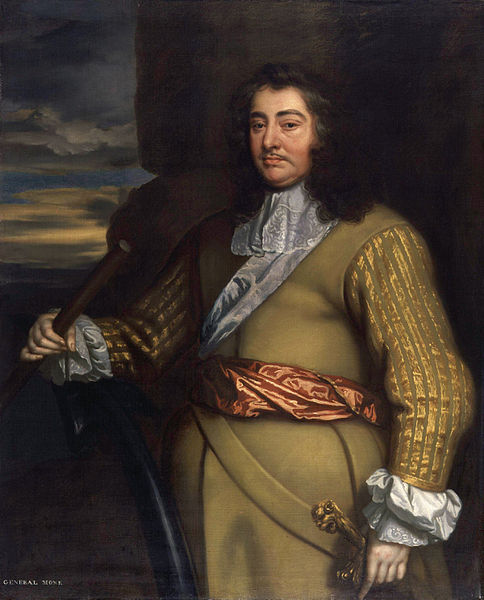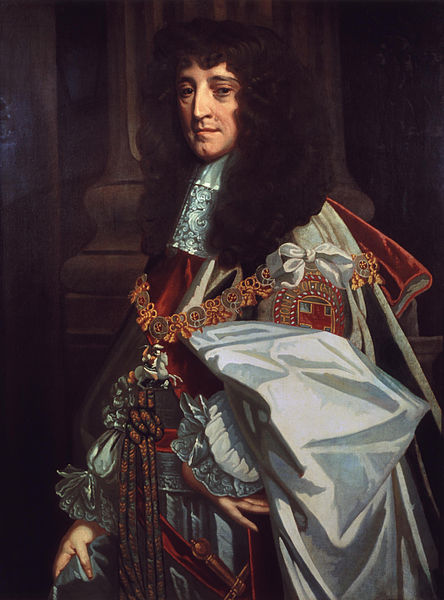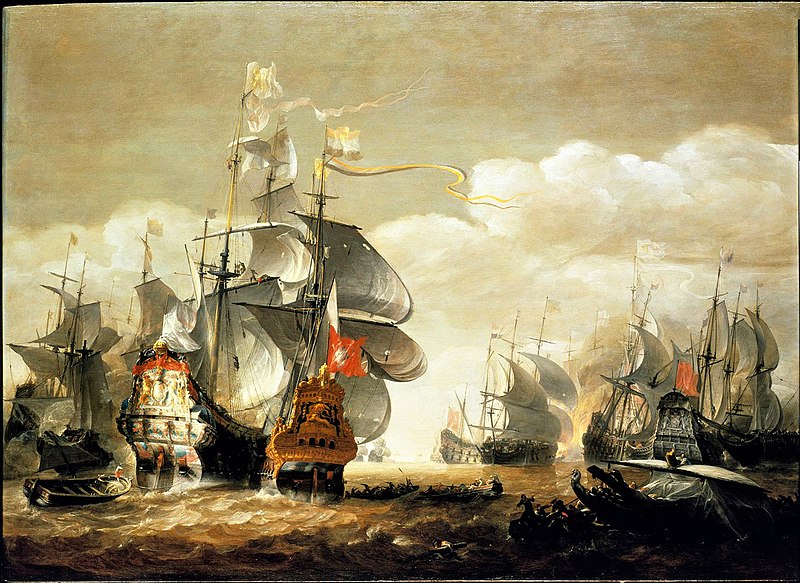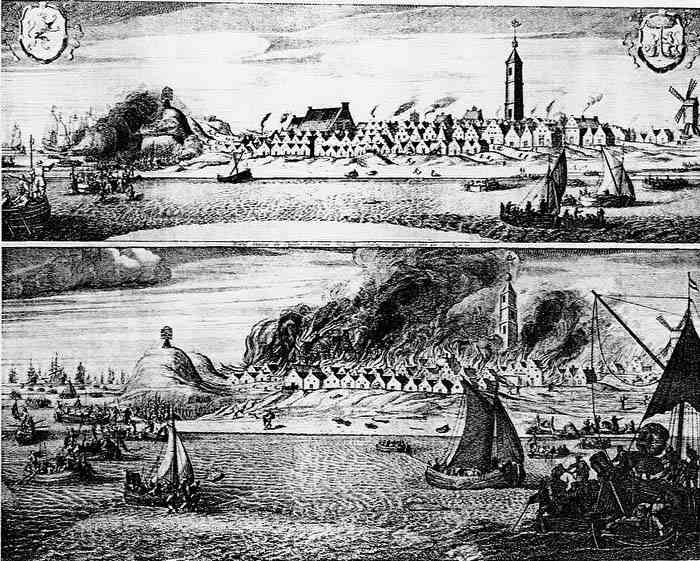Off With the Old, On With the New
There is
little evidence of affairs in Rupert’s life; he was believed to have had an
affair with the Duchess of Richmond during the Civil War, but as he was a good
friend of the Duke as well as the Duchess this could be thought of as unlikely.
In 1663 the diarist John Evelyn recorded that Sir George Carteret[i] married his daughter to Sir Thomas
Scot, of Scottshall in Essex, believed to be the son of Prince Rupert[ii].
One Dudley
Bard[iii] was recognised as
Rupert’s son; he was born during the 2nd Anglo-Dutch War. His mother
was Frances Bard, daughter of Henry Bard, one of Charles I’s most loyal
supporters. Frances claimed to be Rupert’s wife, a scrap of paper certifying
the marriage was dated 30th July 1664. Rupert and Frances were an
item for three years before a bitter split.
The split
between Frances and Rupert resulted when Rupert fell madly in love with
one Peg Hughes, an actress, who travelled with Nell Gwynn and other actors to perform before the Queen at Tunbridge Wells where Catherine was taking the
waters. Count Grammont wrote in his memoirs;
‘Prince Rupert found charms
in the person of another player, called Hughes, who brought down, and greatly
subdued his natural fierceness. From this time, adieu alembics, crucibles,
furnaces, and all the black furniture of the forges........she caused the poor
prince to act a part so unnatural, that he no longer appeared like the same
person.’[iv]
A Home at Last
 |
| Peg Hughes |
Peg Hughes
was not the first actress Rupert had slept with; John Evelyn outed Rupert,
among others, in a list of shame[v] composed in October 1666. Rupert
was besotted with Peg and this was viewed with much amusement in the
Restoration court, a bitter and dangerous place of brittle friendships, character assassinations and concealed enmity.
Peg had been
the mistress of Sir Charles Sedley, one of Charles’ friends and a court
wit. Peg continued to act for a while
after she and Rupert came to an accommodation; in October 1669 she was listed
as being part of the King’s Company. Her portrait was painted by Sir Peter Lely.
In May 1673
Peg gave birth to Ruperta[vi], who Rupert proudly
acknowledged as his own child. Ruperta inherited her feistiness from both
parents as Rupert wrote to his sister Sophie;
‘She already rules the whole
house, and sometimes argues with her mother, which makes us laugh.’[vii]
In 1677
Rupert built Peg a home, costing £25,000[viii], on land that he bought
in Hammersmith from Sir Nicholas Crispe. Rupert lavished jewellery on Peg[ix], giving her items from
the Palatinate royal collection including his mother’s pearls.
Keeper of the Castle
 |
| George Monck, Duke of Albemarle |
Rupert had
long coveted the post of Master of the Horse to his cousin and since the late
1660s had been negotiating to purchase the post from Monck[x]. Charles refused to allow
the purchase to go ahead, claiming it would be prejudicial to his affairs for
Monck not to hold the post.
Charles’
Catholic queen had failed to provide an heir and his brother James was had
become a Catholic. The Protestant party was pushing for Charles to divorce
Catherine and produce a Protestant heir. There were those who pushed for
Charles illegitimate son, the Duke of Monmouth[xi], to be legitimised and made his
heir.
Rupert was
furious when he discovered in 1668 that Monck had been allowed to sell the post
to the Duke of Buckingham, one of Charles’ sycophants[xii]. Buckingham paid Monck
£1,000 per annum[xiii].
To assuage his cousin’s annoyance in September Charles made Rupert Constable and Governor of Windsor
Castle. Charles
needed someone of immaculate credentials; royal, a long time supporter of the
regime and, most importantly in the current crisis, Protestant.
 |
| Windsor in the 1670s |
‘Prince Rupert [as]
Constable had begun to trim up the keep or high round tower and handsomely
adorned his hall with furniture of arms which was very singular....we went into
his bedchamber and ample rooms which were hung with tapestry, curious and
effeminate paintings.’[xiv]
Rupert
appointed his own men to key posts; his doctor was appointed the castle’s
chirugeon[xv];
Sir William Reeves, Rupert’s former page, was made Rider of the Forest of
Windsor with powers to act as Rupert’s lieutenant if necessary. With the run of
the castle Rupert could now return the hospitality he had received from friends
on the continent; entertaining the Landgrave of Hesse among others.
Rupert
re-organised the procedures used for defending the castle and provided more up
to date weapons for the soldiers along with better barracks. He had the Devil’s
Tower repaired and had it used for storing the garrison’s gunpowder.
Financial Concerns
 |
| Rupert's Land |
Rupert’s
love of hunting made him an ideal custodian of the Windsor estates; Charles,
always restless loved to come down from London to hunt stags in the forest and
walk through the park. Rupert was as sporting as his cousin, keeping a yacht on
the Thames, but also kept a suite of apartments in one of the castle’s towers
where he could undertake his experiments. But, as with so many Stuart
appointments, the emoluments were tardy in arrival;
‘Charles Bertie to the
Auditor of the Receipt to pay Prince Rupert 1½ years of his allowance of 10s a
day[xvi]
as Governor of Windsor Castle.’[xvii]
Rupert was
not a rich man and needed every penny. To help fund his growing expenses Rupert
was heavily involved in the Hudson’s Bay Company. Two French traders, Pierre-Esprit
Radisson and Médard
des Groseilliers,
unable to interest the French state in their proposals to set up a trading post
on Hudson Bay in the far north of Canada[xviii], turned to England and
found a sponsor in Rupert. The company received its charter in 1670 and Rupert
was made its Governor.
Fighting Co-Religionists
 |
| Battle of Texel |
In 1672, following
Charles secret alliance with Louis[xix] the Treaty of Dover (1670), the disagreements between
the Dutch and English flared up again, fuelled by France’s grand European
designs. The two countries set to once more; the Third Anglo Dutch War being forced on the country by
Charles and his ally Lord Arlington. The Dutch were reliant on de Ruyter and
his four victories over the English navy gave the Dutch a breathing space, enabling
them to fend off the French.
The 1673 Test Act[xx] disqualified James from his post as
Lord High Admiral and Charles appointed his cousin, a staunch Calvinist, to
command the fleet. Rupert was not however allowed his choice of men to serve
under him. Rather than his friend Holmes, Rupert had Sir Edward Spragge.
The battle of Texel in early August 1673 saw the death of Edward Spragge and
Rupert wrote to Charles;
‘I hope you will send us
your pleasure for our flags. Sir Edward being unfortunately drowned, I hope
there will be no dispute to have Sir Robert Holmes in his place.’[xxi]
Rupert was
not destined to have his friend under his command; Charles ignored his cousin’s
recommendation and appointed someone else. The end of the fighting season saw
the fleet in the Thames for re-victualling and a refit; the war with the Dutch
came to an end over the winter. The Treaty of Westminster was signed in February 1674.
Death of a Cavalier
 |
| George Louis, Prince of Hanover |
Rupert’s
involvement in the Hudson’s Bay Company led to a friendship with Lord Shaftesbury[xxii] whose attitude to Charles’
government was so critical that he was dismissed as Lord President of the
Council. Shaftesbury, along with many others, was determined to exclude James
from the succession; something Charles was equally determined to prevent. Rupert
was one of those who tried to persuade Charles to recall parliament in January
1680; Charles ignored the petitioners.
By the late
1670’s Rupert’s health increasingly troubled him. His head wound was paying up
again and he suffered from an open sore on his leg; when his nephew George Louis[xxiii] visited in 1680 he wrote to inform
his mother;
I went to see Uncle Rupert
who received me in bed for his ailment often keeps him to his bed. He has to
take care of himself.’[xxiv]
Rupert made
use of an invalid chair, but was still able to attend to his own and his
adopted countries affairs. In October 1681 Rupert attended a meeting of the
Privy Council to discuss the intended sale of guns that he had invented to the
French. Eventually the guns were sold to the Board of Ordnance.
 |
| Henry VII Chapel, Westminster Abbey |
Rupert died
at his home in Spring Gardens on 29th November 1681; he was 62. Lord Craven[xxv] was appointed executor of his will
and Ruperta’s guardian. Rupert was buried in Henry VII’s chapel in Westminster Abbey. The court went into mourning
for three weeks.
His lack of
extravagance meant that he was able to leave Peg and Ruperta well provided for
along with rewards for his faithful servants. Dudley Bard received the house at
Rhenen, and all monies owed to him by the Emperor, Charles Louis and other
non-English debtors.
Bibliography
Prince
Rupert of the Rhine – Maurice Ashley, Purnell Book Services Ltd 1976
The Later
Stuarts – George Clark, Oxford University Press 1985
Charles II –
Christopher Falkus, Weidenfeld & Nicholson 1972
Prince
Rupert of the Rhine – Patrick Morrah, Constable & Company 1976
Man of War –
Richard Ollard, Phoenix Press 2001
Prince
Rupert – Charles Spencer, Phoenix Paperback 2008
[i]
Treasurer of the Navy
[ii]
Rupert never acknowledged him as such.
[iv]
Prince Rupert - Spencer
[vii]
Prince Rupert - Spencer
[viii]
In 2014 the relative: historic opportunity
cost of that project is
£3,461,000.00 economic cost of
that project is £743,100,000.00 www.measuringworth.com
[ix]
One estimate is that he gave her over £20,000 worth in a decade
[x]
Now Duke of Albemarle
[xii]
Buckingham had not been one of those courtiers who had supported the Stuart
cause throughout the Interregnum, but had courted one of Oliver Cromwell’s
daughters and disparaged Charles Stuart.
Instead he married the daughter of Lord Fairfax. With the Restoration
Buckingham fawned upon Charles who gave him back his estates and a place on the
Privy Council
[xiii]
In 2014 the relative: historic standard of
living value of that income or
wealth is £153,300.00 economic status
value of that income or wealth is £4,764,000.00 economic power value of that income or wealth is £32,520,000.00 www.measuringworth.com
[xiv]
Rupert of the Rhine - Ashley
[xv]
Surgeon
[xvi]
In 2014 the relative: real price of that commodity is £72.66 income value of that commodity is £2,327.00 www.measuringworth.com
[xvii]
Prince Rupert - Spencer
[xviii]
Canada was mostly being scouted and claimed by the French who dominated the fur
trading in the area
[xix]
In return for a pension to free Charles from the demands of Parliament and
enabling him to rule undemocratically
[xx]
Demanding that Catholics and non-Conformists took an oath of supremacy and
allegiance and took communion in Church of England
services
[xxi]
Man of War - Ollard
[xxiii]
Later George I
[xxiv]
Prince Rupert of the Rhine - Morrah
[xxv]
A former admirer of Rupert’s mother





%2C_Duchess_of_Cleveland_by_Sir_Peter_Lely.jpg/487px-Barbara_Palmer_(n%C3%A9e_Villiers)%2C_Duchess_of_Cleveland_by_Sir_Peter_Lely.jpg)


